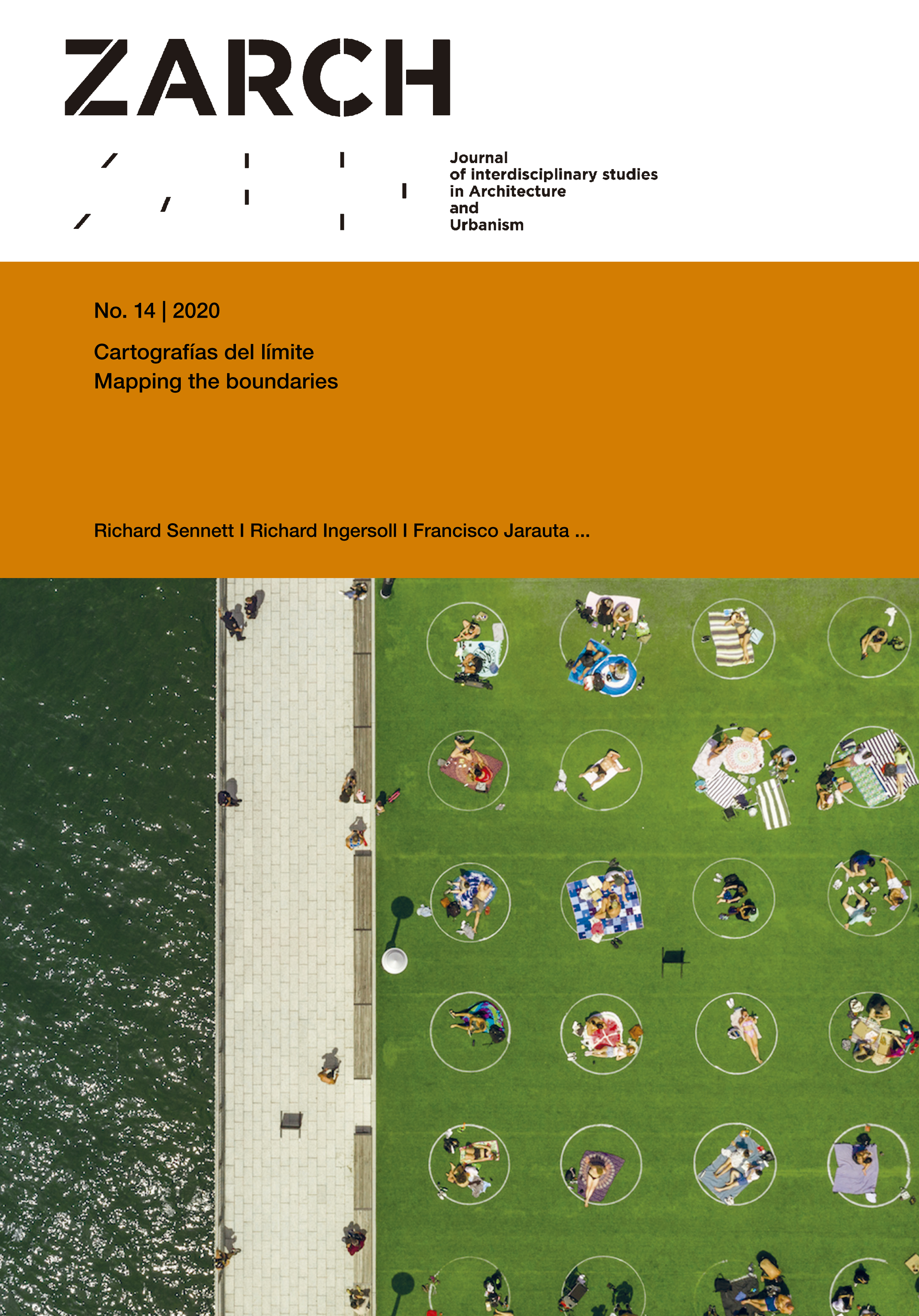The drift of the city
DOI:
https://doi.org/10.26754/ojs_zarch/zarch.2020144442Keywords:
Globalization, Deterritorialization, Generic city, Population growthAbstract
Since the 1990’s, the tendency towards an increasingly stronger globalization and the defense of the local as space and framework of a basic identification is establishing the characterization of a new society and a new culture. In this context, the focus of the debate of architecture is no longer self-referential and it has become one of the laboratories for more active analysis and discussion relating to the contemporary debate about the great ongoing civilizing changes that humanity is experiencing. This text includes some reflections on the emergence of new problems mainly resulting from the growth of global population and its urban distribution. From this perspective, some proposals for city models are discussed, specifically, from the second half of the 20th century―although references to masters of modernity and more recent models are also included―understanding the city as the expression of new social, cultural and political tensions of the modern world.
Downloads
References
Archigram. 1968. “Emancipation”, Archigram 8.
_____. 1964. “Walking City”, Archigram 5.
Bourdieu, Pierre. 2000. Efectos de lugar. En La miseria del mundo [La misère du monde, 1993], dir. Pierre Bourdieu, 119-124. Buenos Aires: Fondo de Cultura Económica.
Branzi, Andrea. 2002. La arquitectura soy yo / L’architecture c’est moi. En Arquitectura radical, coords. Francisco Jarauta, Jean Louis Maubant y Frederic Mgayrou. Las Palmas de Gran Canaria: Centro Atlántico de Arte Moderno.
Constant. Nueva Babilonia. 2015. Madrid: Museo Nacional de Arte Reina Sofía.
Debord, Guy. 1996. Teoría de la deriva [Théorie de la dérive, 1956]. En Teoría de la deriva y otros textos situacionistas sobre la ciudad, eds. Libero Andreotti y Xavier Costa, 22-27. Barcelona: Actar.
Foucault, Michel. 1986. Vigilar y castigar. Nacimiento de la prisión [Surveiller et Punir: Naissance de la prison, 1975]. Madrid: Siglo XXI.
Heidegger, Martin. 1994. Construir, habitar, pensar [Bauen, Wohnen, Denken, 1951]. En Conferencias y artículos. Barcelona: Ediciones del Serbal.
Hollier, Denis (ed.). 1982. Colegio de Sociología (1937-39) [Le Collège de Sociologie (1937-1939), 1979]. Madrid: Taurus.
Ito, Toyo. 2006. Arquitectura de límites difusos [Blurring Architecture, 1999]. Barcelona: Gustavo Gili.
Kennedy, Paul. 1995 Hacia el siglo XXI [Preparing for the Twenty-first Century, 1993]. Barcelona: Plaza y Janés.
Kipnis, Jeffrey. 1993. Toward a New Architecture. En AD: Folding and Pliancy. London: Academy Editions.
Koolhaas, Rem. 2016. La ciudad genérica [The generic city, 1995]. Barcelona: Gustavo Gili.
Mies van der Rohe, Ludwig. 1996. Programa para la exposición de arquitectura de Berlín de 1931 [Programm zur Berliner Bauastellung, 1931]. En Fritz Neumeyer. Mies van der Rohe, La palabra sin artificio. Reflexiones sobre arquitectura 1922/1968. Madrid: El Croquis editorial.
Platón, 1993. Carta VII: Platón desea buena suerte a los parientes y amigos de Dión [Carta VII, 353 a. C.]. Platón. Obras completas. Madrid: Aguilar.
Pierrefeu, François de y Le Corbusier. 1980. La casa de los hombres [La maison des hommes, 1942]. Barcelona: Apóstrofe.
Sennett, Richard. 2019. Construir y habitar. Ética para la ciudad [Building and Dwelling. Ethics for the City, 2018] Barcelona: Anagrama.
Virilio, Paul. 2009. Velocidad y política [Vitesse et Politique, 1977]. Buenos Aires: La Marca.


